Rabindranath Tagore EssayThe national anthem of our country is a pride for all Indians. In this article, we are going to discuss the man who wrote it. He won so many awards in his entire life, one of the most prominent awards was the Nobel prize. Rabindranath Tagore was a poet, writer, playwright, composer, philosopher, and social reformer. 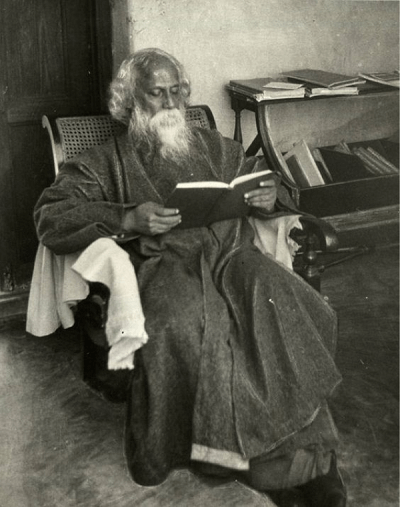
His contribution to the literature of the country and Bengal is enormous. He is known as the face of Bengali literature. Not only was Tagore the first Indian but also the first Asian to win a Nobel Prize. He modernized and reshaped the face of Bengali literature. Sri Lankan national anthem is also inspired by his work. Early Life: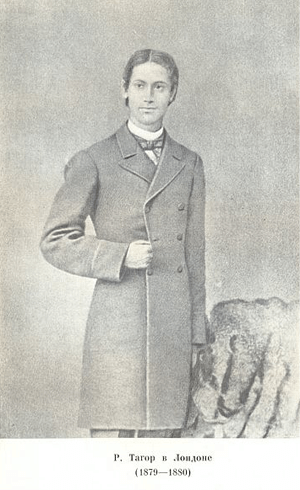
Rabindranath Tagore was born on May 7th, 1861 in the Jorasanko mansion in Calcutta. He was born to Debendranath Tagore and Sarada devi. He had 12 siblings. He was the youngest among the children of Sarada and Debendranath. He was mostly raised by his servants as his mother passed away when he was a child and his father used to travel a lot. Originally Tagores were known as Kusharis. His father Debendranath Tagore used to invite musicians into his house to teach his children about classical music. Dwijendranath who was Tagore's eldest brother was a philosopher and poet. As we all know, the first Indian to join the elite European Indian civil service was Satyendranath Tagore, brother of Rabindranath Tagore. Swarna Kumari one of his sisters of Tagore was a novelist. His brother Jyotirindranath was a writer, and musician. Jyotirindranath's wife Kadambari Devi who was slightly elder than Tagore was a good friend of his. She attempted suicide in 1884 which left Rabindranath Tagore distraught. Tagore didn't believe in classroom studies, he preferred to learn in nature while roaming around. His brothers played a huge role in his physical conditioning. His brother Hemendra Nath taught him Judo, and wrestling and made him swim Ganges and trek mountains. Tagore hated formal education. According to him, proper teaching doesn't explain things, it makes a person curious about things. He wrote upanayana when he was just eleven. After the upanayan Tagore and his father decided to do an India tour. During his tour time, he visited Shantiniketan which was the estate of his father. He also visited the Himalayan hill station of Dalhousie. When he was in Dalhousie, he started reading biographies, started exploring classical poems of Kalidasa. He also learned about history, astronomy, and modern science. During his India tour, he also visited Amritsar, where he got greatly influenced by Gurbani and Nanak Bani. This influence led him to write six poems related to Sikhism. Education:His father wanted him to become a barrister, in order to achieve that. His father enrolled him in a public school which was located in Brighton, East Sussex, England. Tagore family owned a house near Brighton and Hove, where Tagore stayed during his schooling. Few of his family members like his nephew, niece, and sister-in-law shifted to England to support his studies. After completing his school, he joined University College in London, where he started learning law, but as he didn't believe in the formal education system, soon he dropped out of college and started exploring the works of Shakespeare on his own. He was not just interested in Indian literature, he also learned about Scottish and Irish literature and music. In 1883 he married Mrinalini Devi who was just 10 years old. She gave birth to five children, out of which only three survived. Manasi which is considered to be one of the best works of Tagore was published in 1890. Baul Lalon shah's folk songs greatly influenced Tagore. He also helped in popularizing his songs. The time period between 1891-1895, is considered to be Tagore's Sadhana period because he was very consistent and productive during this time period. Galpaguchchha is a novel consisting of 84 stories, it consists of three volumes. During his sadhana period, he wrote more than half of the 84 stories. Establishment of Santiniketan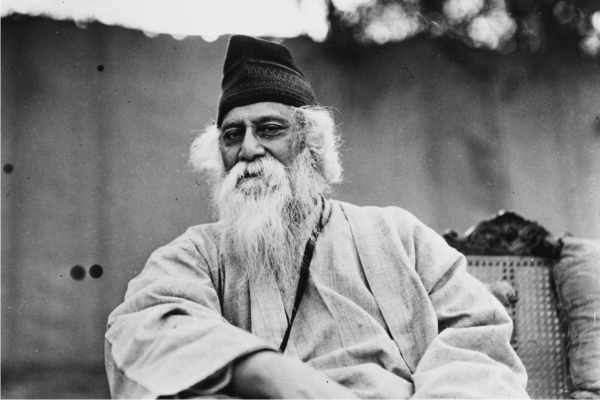
Santiniketan was considered an experimental school. In the year 1901, he moved to Santiniketan to find an ashram which has a marble-floored prayer hall, groves of trees and gardens, and a library. Santiniketan is also referred to as the "Abode of peace". He ought to blend western and traditional ways to provide teachings. He decided to settle down in 1921 in Viswa Bharti university. Santiniketan was the legacy of Tagore's father. He bought a good amount of land in Santiniketan. In Santiniketan traditional way of teaching was followed, students used to sit under trees and the guru shishya method was followed. Rabindranath Tagore thought it would be more beneficial to the society than the modernized way of teaching. Rabindranath Tagore was left distraught when his wife and his two children died during their stay in Santiniketan. His sadness could be seen in his later works. But it was during his stay in Santiniketan that his work started growing rapidly, his work got famous among Bengali and foreign readers. He wrote Gitanjali in 1910 and translated it into English in 1912. Later he shared his works with his admirers like William Butler Yeats and Ezra Pound. And few selections from Gitanjali got published in the American magazine Poetry. This helped him gain popularity around the globe and eventually, he won the Nobel prize in 1913 in Literature. In 1919 after the Jallianwala Bagh Massacre he renounced his knighthood award which he got in 1915 birthday honors. World Tour: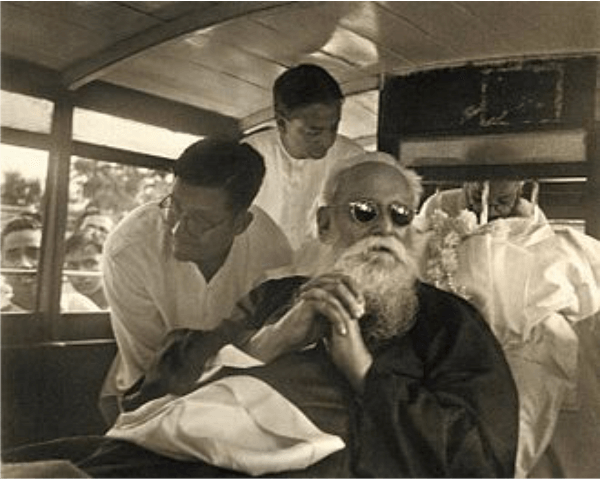
Rabindranath Tagore believed in the idea of one world. So, he decided to go on a world tour to spread his ideologies and learn more about cultures in the world. While traveling he carried translated copies of his works too, which caught the attention of many legendary poets of different countries. Countries like the United States of America and Japan used to call him to give lectures. During his tour, he found himself visiting countries like Mexico, Singapore, and Rome where he met international leaders like Einstein and Mussolini. His literary work and wisdom inspired many during his Southeast Asian tour. He also used his tour to meet different leaders and discuss the problems between the English and the Indians. He worked as a powerful spokesperson for the cause of Indian Independence. As he traveled across the world, he came to the realization that nationalism is mightier than his ideologies, which deepened his hatred toward communalism and nationalism. During his lifetime he traveled across five continents and around 30 countries. Many people say that Tagore was a man who was way ahead of time. Works of Rabindranath Tagore:Rabindranath Tagore was mostly famous for his poems. But his short stories are also as impactful as his poems. He started writing at a very young age, but he produced more works after the death of his wife and children. Along with poems he also wrote essays, travelogues, dramas, and thousands of songs. His writing was rhythmic, lyrical, and optimistic about nature. His works gained popularity because most of his stories were taken from the lives of common people. His non-fiction work lingered around history, linguistics, and spirituality.
Politics: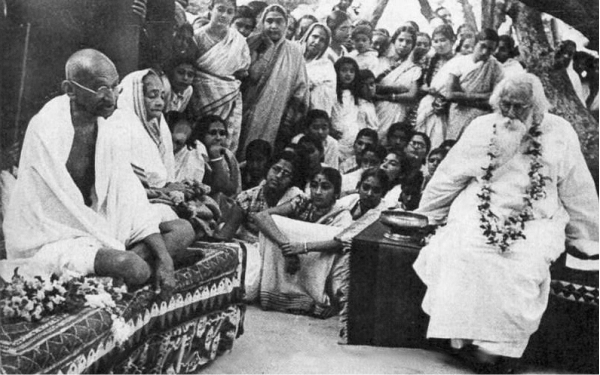
Manast was published in the twenties of Rabindranath Tagore, through manast's stories people got to know Tagore's interest in politics. He was strictly against imperialism and he supported Indian Nationalists. Rabindranath Tagore was a great intellectual, he supported the Indian movement, and he wanted India to be free without denying the fact that this country has lots of things to learn from abroad. He didn't like victim card playing, he wanted people to seek self-education. Though many supported his views many opposed his views too, he escaped assassination in late 1916 while he was staying in San Francisco. Tagore wrote songs that strengthened the Indian Independence movement, especially two of his songs, "Chitto Jetha Bhaysunyo" and "Ekla Chalo re" which were also favored by our Bapu. Tagore also helped in resolving the dispute between Gandhi and Ambedkar. The dispute was regarding a separate electorate for untouchables. Impact and Legacy: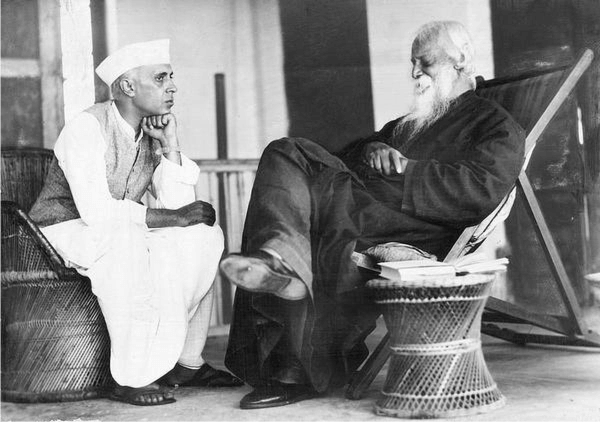
Rabindranath Tagore helped in reviving the Indian culture and introduced it to the whole world. His name comes along with many politicians as one of the architects of modern India. Many events are organized to pay tribute to the legend. Kabipranam is celebrated on his birth anniversary. Along with India, he was also popular in Europe, North America, and East Asia. He is also co-founder of Dartington Hall School located in Japan. It is a progressive co-educational institution. Famous personalities like "Yasunari Kawabata", and "And Nguyen An Ninh" were inspired by him. His literary works were widely translated into different languages like Dutch, English, and Spanish. Legendary writers like Pablo Neruda, Octavio Paz, Jose Ortega y Gasset were admirers of him. Conclusion:Rabindranath Tagore took his last breath on 7th August 1941. After his demise, leading newspapers gave tribute to him by giving him titles like "India's greatest man of letters," "the soul of Bengal," and "ambassador of friendship between East and West." Definitely, the greatest poet of yesteryears Rabindranath Tagore with his sublimity and themes outshined mankind with human touch and grace.
Next TopicMy Ambition in Life Essay
|
 For Videos Join Our Youtube Channel: Join Now
For Videos Join Our Youtube Channel: Join Now
Feedback
- Send your Feedback to [email protected]
Help Others, Please Share









